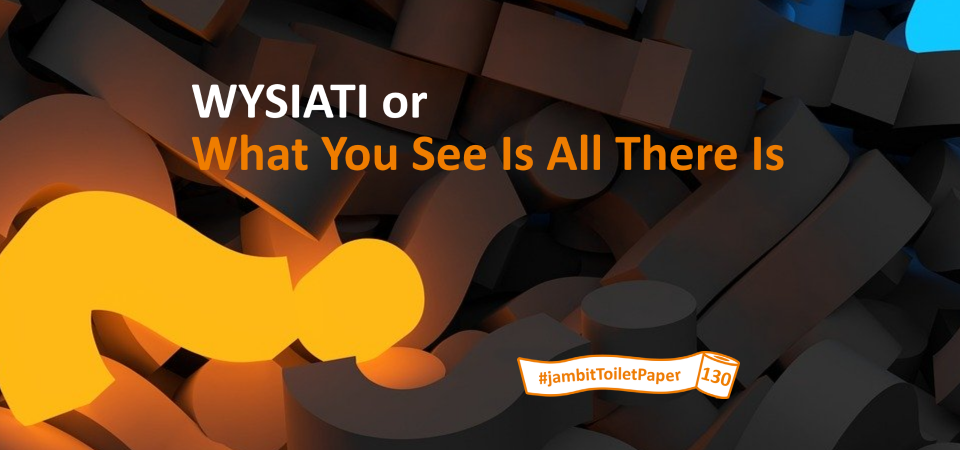WYSIATI or What You See Is All There Is
Problem: The Dunning-Kruger Effect

Tobias Debias knows the Technology T, Architecture A and Method M. T, M & A might refer to Spring Boot, Microservices, and Scrum. After hearing about a project for the first time, Tobias is instantly sure that the problem at hand should be solved with these tools. Examples and arguments for T, M & A come easily to his mind and he knows that his colleagues would also agree with him.
Tobias uses a range of patterns, like Availability Heuristics and Confirmation Bias, but also Focusing Effect, Illusion of Validity and Group Thinking in form of Bandwagon Effect play a role here for the Overconfidence Effect and Optimism Bias. Tobias makes a complex process simple by substituting the question: "How should we implement this system?" with "Do I know tools which could be used to implement this system?" and selects a set of technologies, architectural patterns and methodologies without exhaustive thinking.
We are all like Tobias. The Dunning-Kruger Effect does not only affect people setting foot into an unknown area, and thus being naturally overconfident due to a lack of understanding. As knowledge and experience grows, we are able to overcome some problems of overconfidence, but will still suffer of biased thinking. Especially in highly dynamic systems, where it's hard to develop expertise, and therefore make sound and educated decisions on your own.
WYSIATI refers to the fact that we normally make our judgements and impressions according to the information we have available (narrow framing).
The Dunning-Kruger Effect is the tendency for unskilled individuals to overestimate their own ability and the tendency for experts to underestimate their own ability.
Solution: Willingness to learn and teamwork
Be aware, keep improving yourself and ask for feedback. Prefer processes which minimize bias and make sure everyone is heard. Encourage critical thinking and support the diversity of ideas. Find options, study possible outcomes with Pre-mortems and resist the urge to jump to conclusions before understanding a problem. Collect needed information before building an intuitive big picture. Regularly self-assess yourself: "For which reasons might my judgement be wrong?".
Willingness to learn is essential. Use Code Reviews, Retrospectives and Post-mortems as learning tools. And remember: You will be making mistakes, but it’s harder to make them together. Collaboration drives us to learn and enables us to find the right actions in a short amount of time. Get to know yourself, and get to know your fellow workers, since without the help of others one is never going to truly reach one's peak, and also isn't stopped before getting into trouble.

Examples:
"I like this stuff. I really get it… every one of these doctors said, ‘how do you know so much about this?’ Maybe I have a natural ability." - Donald Trump about coronavirus outbreak
“Sometimes it’s catastrophic. Just about every war that you see, I think that’s a general rule, there are optimists among the generals and there are optimists on both sides and that is true for a lot of litigation as well. So a lot of conflict is fed by overconfidence.” – Daniel Kahneman
Further Aspects:
- Thinking Fast and Slow by Daniel Kahneman is excellent book about behavioral economics, decision making and our natural tendencies of avoiding effortful thinking.
---
Authors: Jukka Nikki & Dominik Süß / Senior Software Architect & Software Engineer / Office Leipzig
Download ToiletPaper #130: WYSIATI or What You See Is All There Is (pdf)
Want to write the next ToiletPaper? Apply at jambit & become a jambitee!

